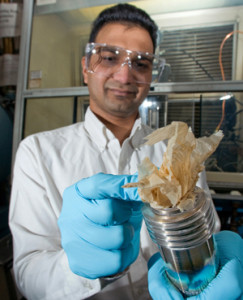Nanoparticles have been central to many recent developments, including computing, communications, energy, and biology. However, because nanoparticles are hard to observe, it’s often difficult to pick the best shapes and sizes to perform specific tasks at optimal capacity.
That may be a problem no longer thanks to research out of Stanford University, where researchers gazed inside phase-changing nanoparticles for the first time – allowing them to understand how shape and crystallinity can have dramatic effects on performance.
Practically, this means that the design of energy storage materials could begin to change.
Take the lithium-ion battery, which stores and releases energy due to the electrode’s ability to sustain large deformations over several charge and discharge cycles without degrading. By nanosizing the electrode, researchers recently improved upon the efficiency process.
(more…)


 A nanoparticle that can help clean water of cadmium becomes toxic once taking in the metal. But research finds that organic matter, in this case from algae, reduces that toxicity.
A nanoparticle that can help clean water of cadmium becomes toxic once taking in the metal. But research finds that organic matter, in this case from algae, reduces that toxicity. Sometimes the biggest advancements are the smallest in size.
Sometimes the biggest advancements are the smallest in size.
